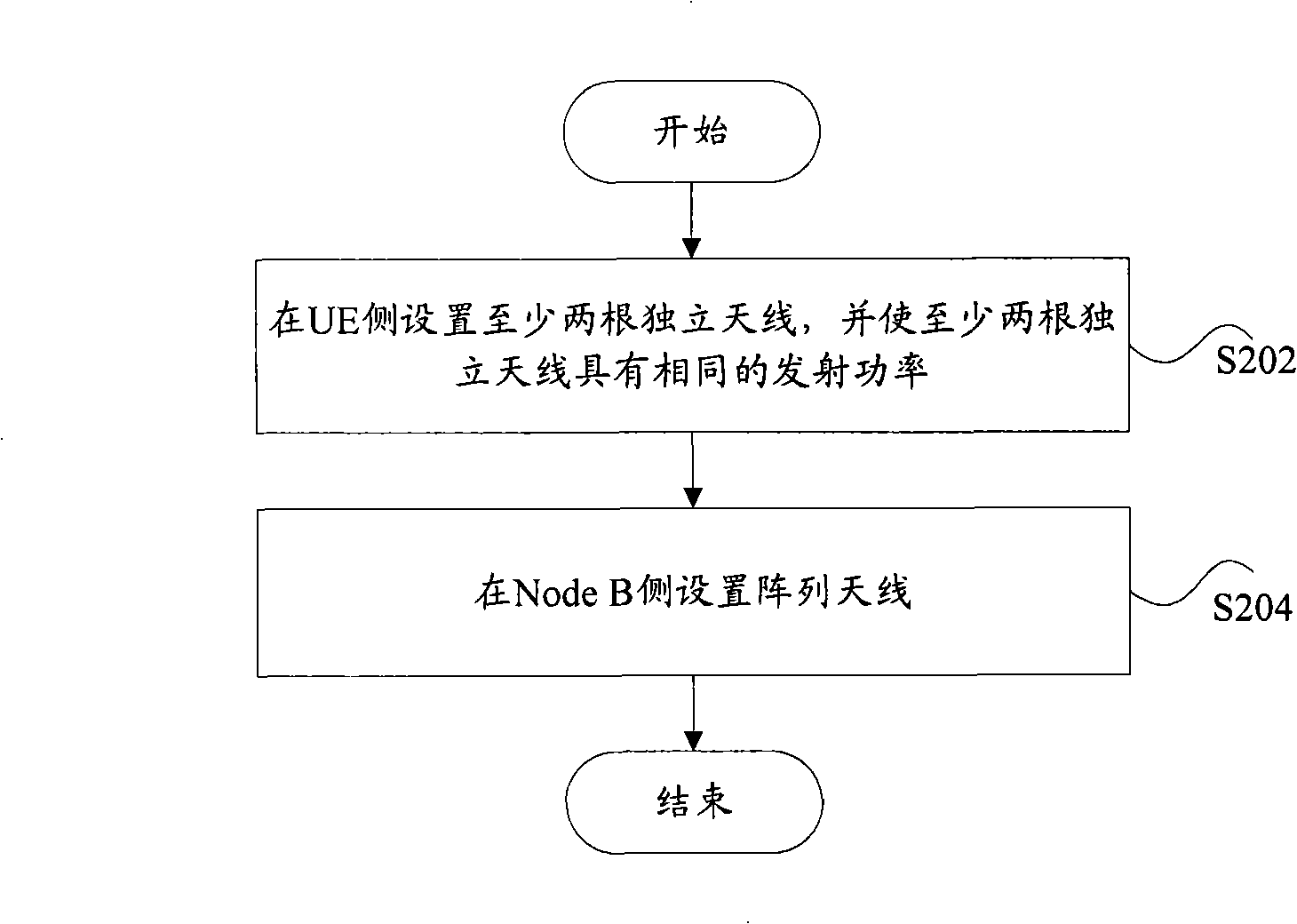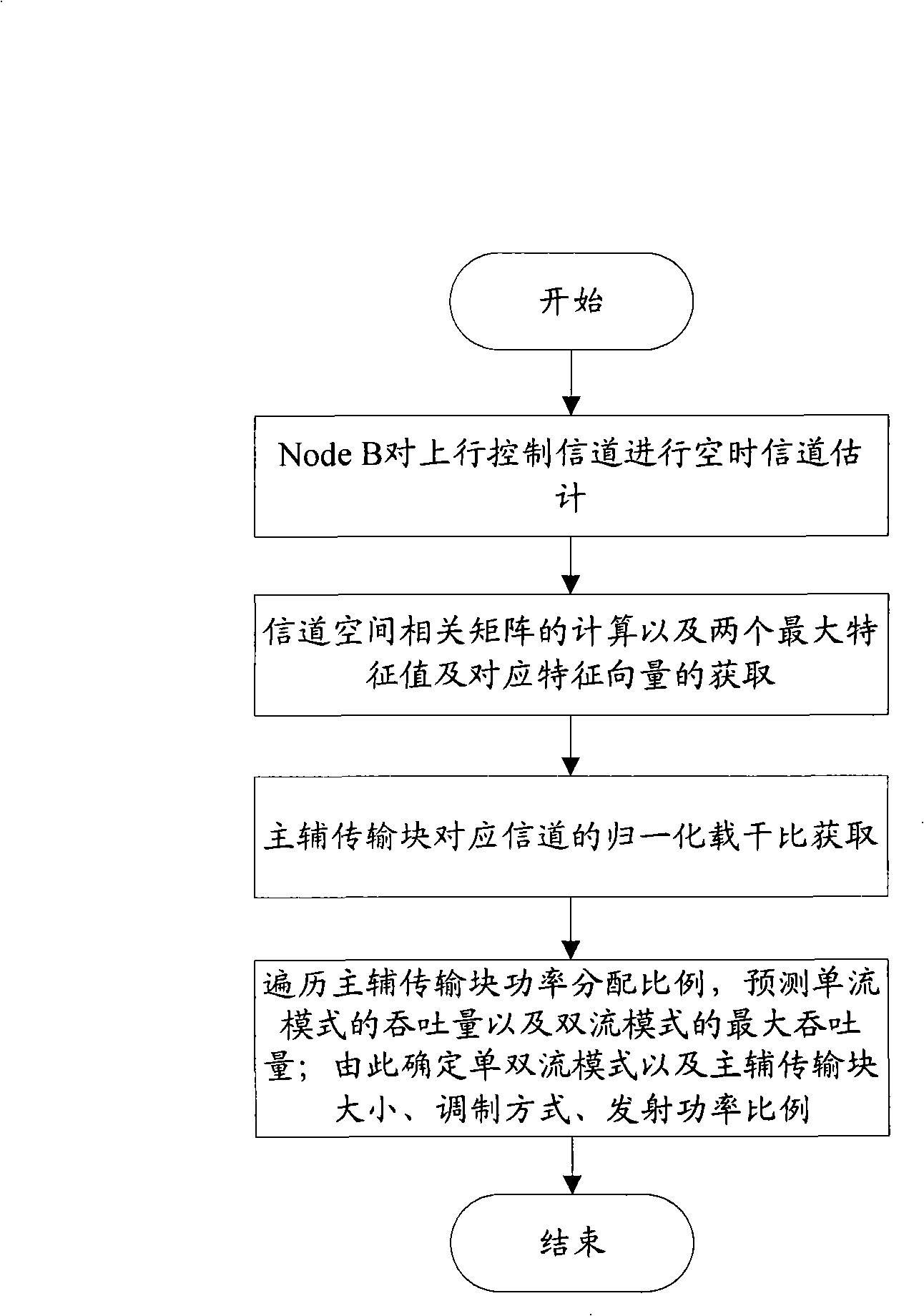Method for applying MIMO technique in TD-SCDMA system outdoor macrocell
A TD-SCDMA, macrocell technology, applied in transmission systems, diversity/multi-antenna systems, space transmit diversity and other directions, it can solve the problems of downlink capacity reduction, user C/I reduction, limited degrees of freedom, etc., and achieve capacity improvement. , the effect of improving throughput
- Summary
- Abstract
- Description
- Claims
- Application Information
AI Technical Summary
Problems solved by technology
Method used
Image
Examples
example 1
[0051] Example 1: Processing on the Node B side
[0052] Such as image 3 As shown, on the Node B side, the Node B first performs space-time channel estimation on the uplink control channel, and then calculates the channel spatial correlation matrix and obtains the two largest eigenvalues and corresponding eigenvectors; The normalized carrier-to-interference ratio of the channel corresponding to the transport block is obtained; finally, traverse the power allocation ratio of the main / auxiliary transport block to predict the throughput of the single-stream mode and the maximum throughput of the dual-stream mode, thereby determining the single / dual-stream mode and the main / secondary mode. Auxiliary transmission block size, modulation mode, transmit power ratio.
[0053] Specifically, it can be described as the following processes (1) to (8).
[0054] (1) Node B obtains the channel impulse response of different transmit antennas on the UE side by performing channel estimation...
example 2
[0072] Example 2: Processing on UE side
[0073] For the dual-stream mode of the downlink high-speed packet service, the joint detection system equation of the UE receiver is extended as follows (processing (1) to processing (4))
[0074] (1) Through channel estimation, the UE obtains the channel impulse response h of the primary / secondary transmission block on the two receiving antennas p (1) 、h s (1) 、h p (2) 、h p (2) ; Then convolve the same group of scrambled spread spectrum composite codes separately to get the corresponding b vector b p (1) , b s (1) , b p (2) , b p (2) ; and according to the existing method, the b vector is horizontally arranged to obtain a small block v p (1) , v s (1) , v p (2) , v p (2) ;
[0075] (2) Arrange the V blocks corresponding to the main / auxiliary transmission blocks of the same antenna horizontally to obtain a new V block V ( 1 ) ...
PUM
 Login to View More
Login to View More Abstract
Description
Claims
Application Information
 Login to View More
Login to View More - R&D
- Intellectual Property
- Life Sciences
- Materials
- Tech Scout
- Unparalleled Data Quality
- Higher Quality Content
- 60% Fewer Hallucinations
Browse by: Latest US Patents, China's latest patents, Technical Efficacy Thesaurus, Application Domain, Technology Topic, Popular Technical Reports.
© 2025 PatSnap. All rights reserved.Legal|Privacy policy|Modern Slavery Act Transparency Statement|Sitemap|About US| Contact US: help@patsnap.com



